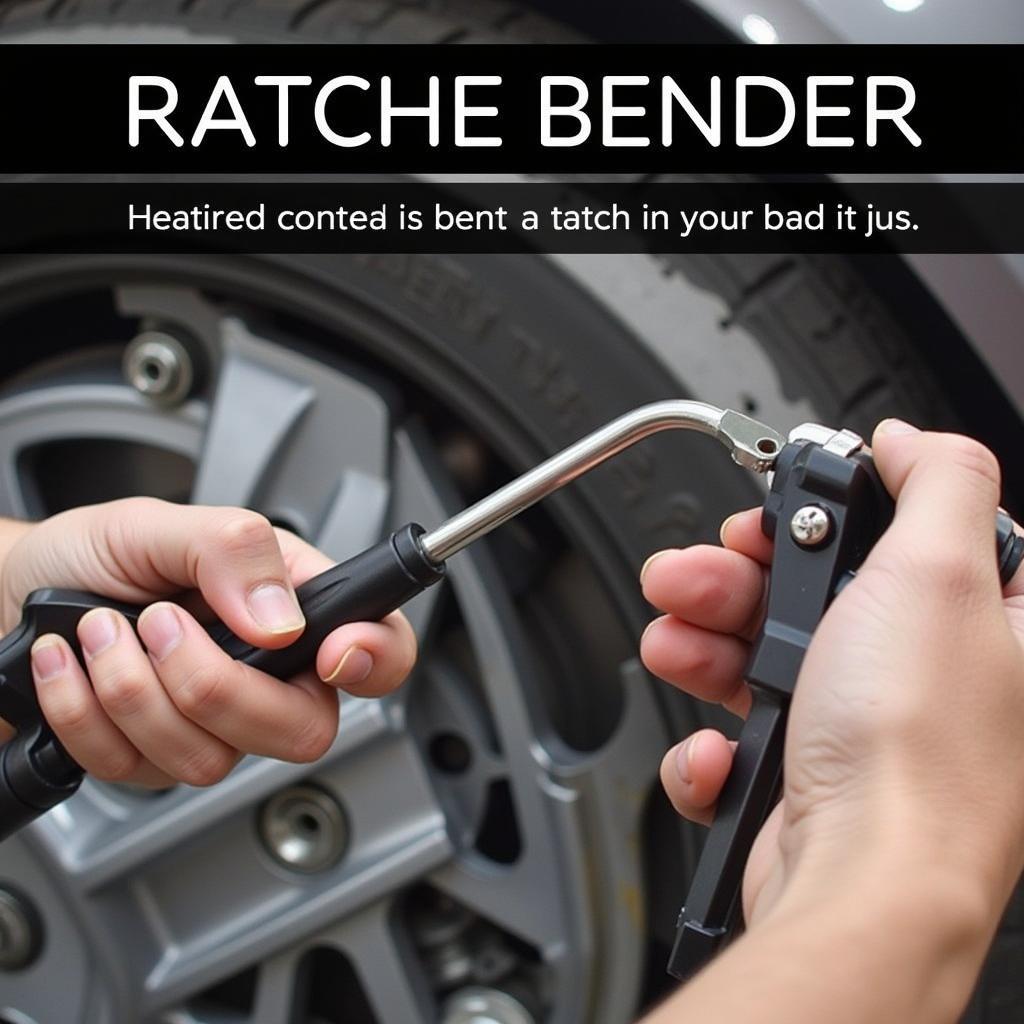A car brake pipe bending tool is an essential piece of equipment for anyone working on brake systems. Whether you’re a professional mechanic or a DIY enthusiast, understanding how to use this tool correctly is crucial for ensuring safe and effective braking performance. This article will delve into the intricacies of car brake pipe bending tools, covering everything from different types and their uses to best practices and safety tips.
Types of Car Brake Pipe Bending Tools and Their Applications
There are several types of car brake pipe bending tools available, each designed for specific applications. Choosing the right tool depends on the type of brake pipe material (copper, steel, or nickel-copper), the pipe diameter, and the complexity of the bends required.
- Lever-type benders: These are the most common type, offering a simple and affordable way to create precise bends in softer metal pipes like copper. They are ideal for DIYers and for making less complex bends.
- Ratchet benders: These provide more leverage and control, making them suitable for bending harder materials like steel brake lines. Their ratcheting mechanism allows for incremental bending, useful for tight spaces.
- Tube flaring tools: Though not strictly bending tools, flaring tools are essential for creating the flared ends necessary for connecting brake lines. They often come as part of a brake line repair kit.
- Hydraulic benders: These are professional-grade tools used for bending larger diameter pipes and creating complex bends. They are typically found in automotive workshops.
How to Use a Car Brake Pipe Bending Tool Effectively
Using a car brake pipe bending tool correctly is crucial to avoid kinking or damaging the brake lines. Here’s a step-by-step guide for using a lever-type bender:
- Measure and mark: Determine the location of the bend and mark it clearly on the brake pipe.
- Select the correct former and die: Choose the former and die that match the diameter of your brake pipe.
- Position the pipe: Place the pipe in the bender, aligning the mark with the appropriate point on the former.
- Apply pressure: Slowly and steadily apply pressure to the lever, bending the pipe to the desired angle.
- Check the bend: Remove the pipe and check the angle against your requirements. Make minor adjustments if needed.
Remember, practice makes perfect. Start with some scrap tubing to get a feel for the tool before working on your actual brake lines.
 Using a Ratchet Bender for Steel Brake Lines
Using a Ratchet Bender for Steel Brake Lines
Best Practices and Safety Tips for Car Brake Pipe Bending
Safety is paramount when working on brake systems. Here are some important safety tips to remember:
- Always wear safety glasses: Protect your eyes from flying metal particles.
- Use the correct type of fluid: Only use brake fluid recommended by the vehicle manufacturer.
- Bleed the brakes after any repair: This removes any air that may have entered the system.
- Inspect the entire brake system: Look for any signs of wear or damage.
“Proper brake maintenance is not just about performance, it’s about safety,” says John Smith, Senior Automotive Engineer at AutoTech Solutions. “Using the right tools and techniques, like a quality car brake pipe bending tool, is essential for ensuring reliable braking.”
Choosing the Right Car Brake Pipe Bending Tool for Your Needs
Selecting the correct tool depends on various factors. If you’re a DIYer working primarily with copper pipes, a lever-type bender might suffice. However, professionals or those working with steel lines should consider a ratchet or hydraulic bender.
Consider these factors when choosing a tool:
- Material of the brake pipe: Copper, steel, or nickel-copper.
- Diameter of the brake pipe: Ensure the bender accommodates the correct size.
- Frequency of use: Invest in a higher quality tool if you plan on frequent use.
- Budget: While professional-grade tools are more expensive, they offer greater precision and durability.
“Investing in a quality car brake pipe bending tool will save you time and frustration in the long run,” adds Sarah Johnson, Lead Mechanic at Johnson’s Auto Repair. “A good tool will allow you to create precise bends, preventing leaks and ensuring optimal braking performance.”
Conclusion
A car brake pipe bending tool is an indispensable tool for anyone working with brake systems. Understanding the different types, proper usage techniques, and safety precautions is essential for achieving safe and effective braking. By following the guidelines outlined in this article, you can confidently tackle brake line repairs and ensure your vehicle’s braking system remains in top condition.
FAQ
- What is the purpose of a car brake pipe bending tool? It allows you to create precise bends in brake lines without kinking or collapsing them.
- What are the different types of car brake pipe bending tools available? Lever-type, ratchet, hydraulic, and flaring tools.
- How do I choose the right brake pipe bending tool? Consider the material, diameter, and frequency of use, as well as your budget.
- Why is it important to use the correct bending technique? Improper bending can damage the brake lines, leading to leaks and brake failure.
- What safety precautions should I take when working with brake lines? Wear safety glasses, use the correct brake fluid, bleed the brakes after any repair, and inspect the entire system.
- Can I bend steel brake lines with a lever-type bender? It’s not recommended. A ratchet or hydraulic bender is better suited for steel.
- Where can I find more information on car brake maintenance? Check out other articles on DiagFixPro for in-depth guides and expert advice.
Need assistance with your car diagnostic needs? Contact us via WhatsApp: +1(641)206-8880, Email: [email protected] or visit us at 910 Cedar Lane, Chicago, IL 60605, USA. Our 24/7 customer support team is ready to help.

